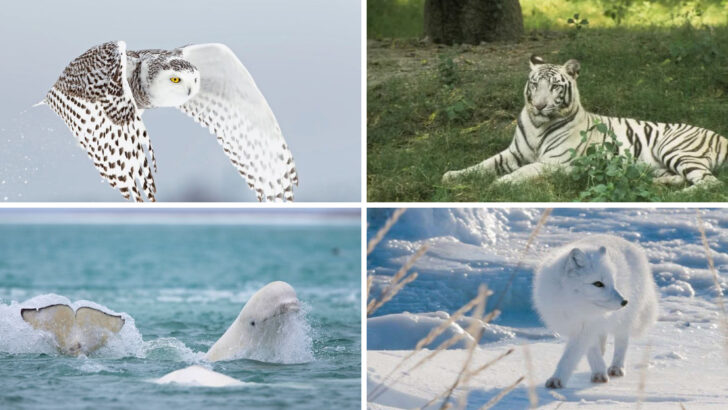Some animals look like they’ve been sculpted out of snow and sprinkled with stardust.
White fur, feathers, or scales can turn even the fiercest beast into something otherworldly. These creatures don’t just blend in with winter—they own it. There’s something wildly enchanting about an animal so pale, it seems to glow.
And no, we’re not talking about your neighbor’s fluffy lapdog in a sweater.
We’re talking about rare arctic foxes, ghostly owls, milky snakes, and creatures that look like they’ve stepped out of a dream—or a fantasy novel.
Get ready to meet 20 white animals so stunning, they’ll make you do a double take. Some are icy by nature, others are genetic wonders. All of them are unforgettable.
Snowy Owl
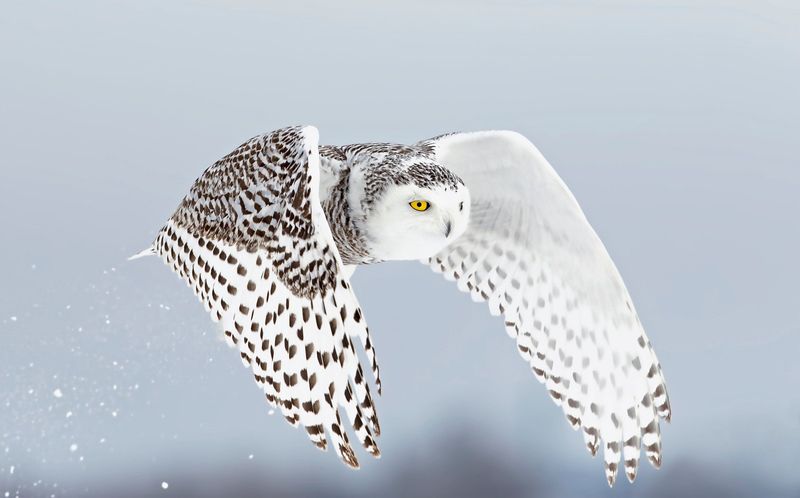
Perched regally on the tundra, the snowy owl’s piercing yellow eyes scan the horizon. Its white feathers, speckled with brown, offer perfect camouflage against the snowy backdrop.
These owls are incredible hunters, known for their precision and patience. Their beauty is matched only by their prowess.
Inhabiting the Arctic regions, snowy owls migrate south during harsh winters. Did you know? Female snowy owls are larger than males and have more prominent markings. This adaptability ensures their survival in extreme climates.
White Bengal Tiger
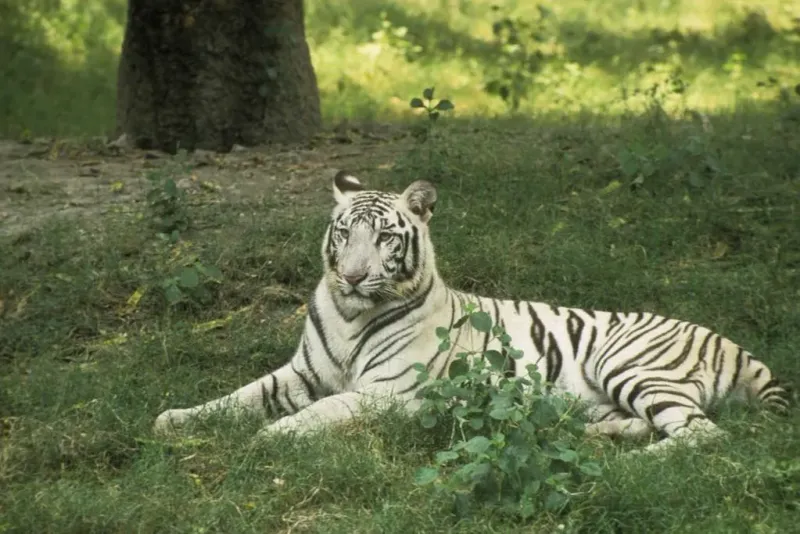
In the dense forests of India, the white Bengal tiger roams with unparalleled grace. Its striking blue eyes and unique black stripes make it a rare spectacle.
These tigers are not albinos but owe their white coat to a genetic mutation. Their presence in the wild is a testament to nature’s diversity.
Once widespread, they now face the threat of extinction due to habitat loss. Conservation efforts aim to protect these magnificent beasts. Legend has it, encountering a white tiger brings good fortune.
Beluga Whale
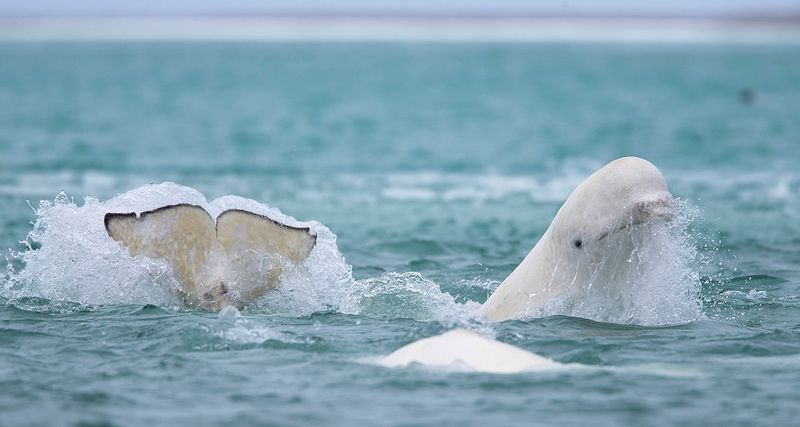
With a playful spirit, the beluga whale dances through Arctic waters. Its smooth white skin gleams under the sunlight, attracting onlookers.
These social creatures are known as the “canaries of the sea” due to their vocal nature. They communicate with a range of clicks and whistles.
Traveling in pods, belugas form close-knit social structures. Did you know? Belugas can mimic human speech sounds. This ability showcases their intelligence and adaptability in the marine world.
Arctic Fox
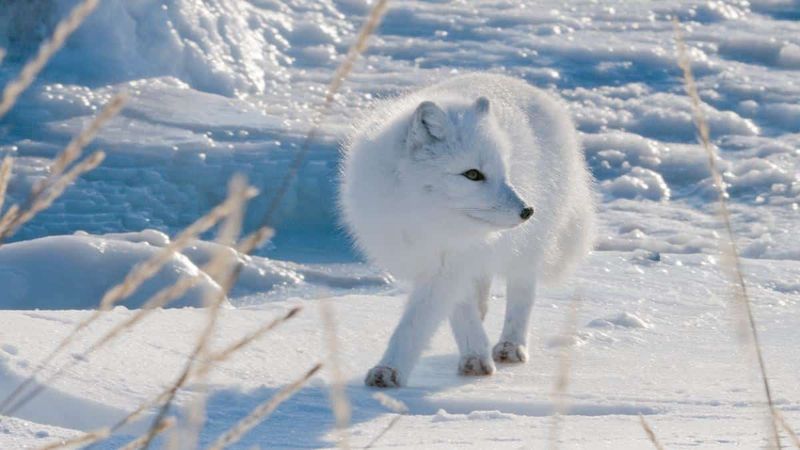
The Arctic fox, cloaked in a thick white coat, elegantly navigates the icy landscapes. Its fur provides both camouflage and warmth, crucial for survival.
In winter, this fox’s coat is pristine white, while in summer, it turns brown or gray. This seasonal change is a marvelous adaptation.
Arctic foxes are scavengers, often following polar bears for leftovers. Fascinatingly, they have a keen sense of smell to locate food under snow. This resourcefulness is key to thriving in harsh conditions.
Albino Peacock
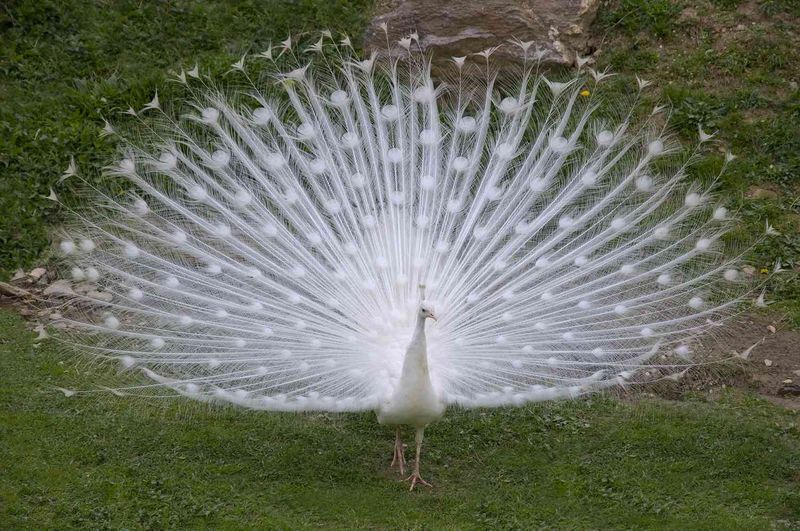
An albino peacock in full display is a vision of ethereal beauty. Its shimmering tail, adorned with iridescent white feathers, captures the essence of elegance.
Unlike their colorful counterparts, albino peacocks lack pigmentation, resulting in their exquisite white plumage. This rare sight is treasured in many cultures.
While mesmerizing, albino peacocks face challenges in the wild due to their visibility. They are often kept in protected environments. Did you know? The peacock is a symbol of grace and beauty in many mythologies.
Ermine
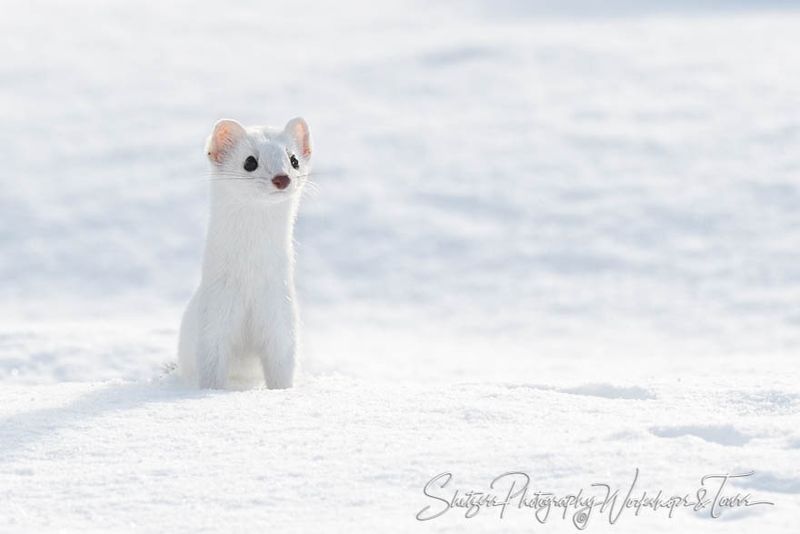
In the realms of fairy tales, the ermine stands out with its pure white winter coat. This tiny creature, often synonymous with regality, is truly enchanting.
During winter, the ermine’s fur turns white, while its tail tip remains black. This transformation aids in blending with snow.
Historically, ermine fur was a symbol of nobility. Did you know? They can hunt prey larger than themselves by using cunning tactics. This boldness is a testament to their survival instincts.
White Lion
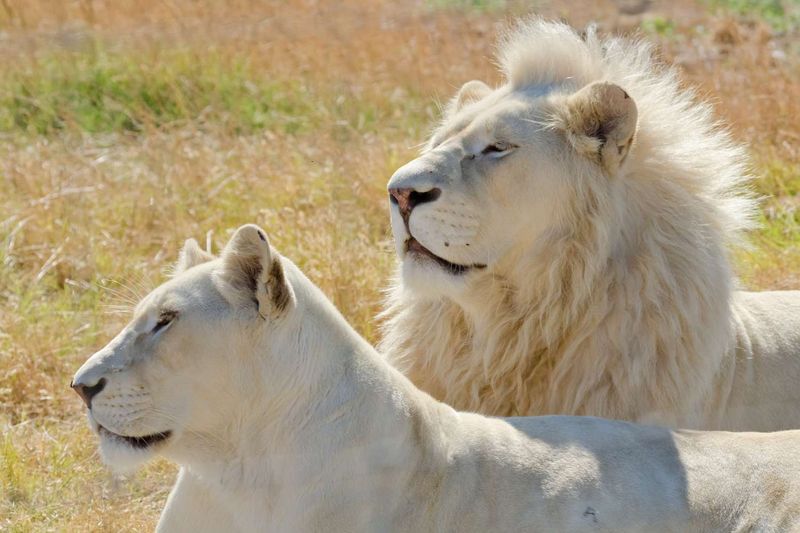
Lying atop a rocky outcrop, the white lion commands attention with its majestic presence and pale mane. These lions are not albinos but have a rare leucistic trait.
Found primarily in South Africa, white lions hold cultural significance and are revered in folklore. They symbolize leadership and courage.
Conservation efforts are crucial for their survival as they face threats from poaching. Did you know? White lions were once believed to be messengers of the gods. Such myths add to their mystique.
Polar Bear
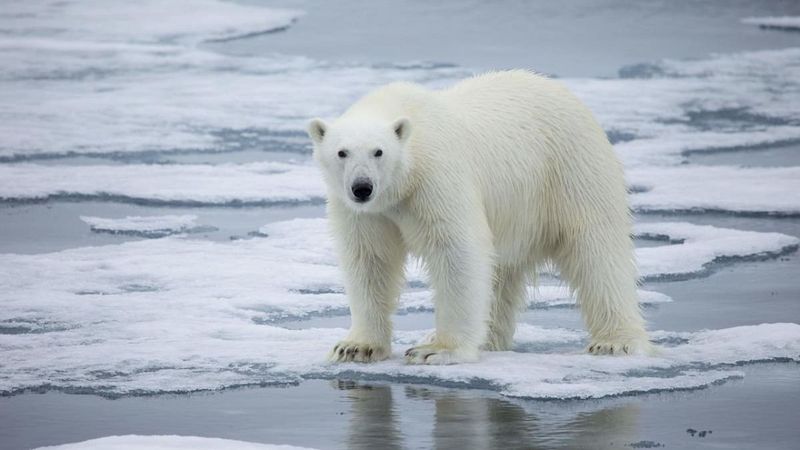
Amidst the Arctic ice, the polar bear reigns supreme. Its thick white fur provides insulation, making it an apex predator in the region.
Polar bears are solitary creatures, known for their incredible strength and ability to swim long distances in search of food. Their survival depends on sea ice.
As climate change impacts their habitat, polar bears become symbols of environmental conservation. Did you know? A polar bear’s fur is actually transparent. This characteristic helps them blend into snowy landscapes.
White Deer
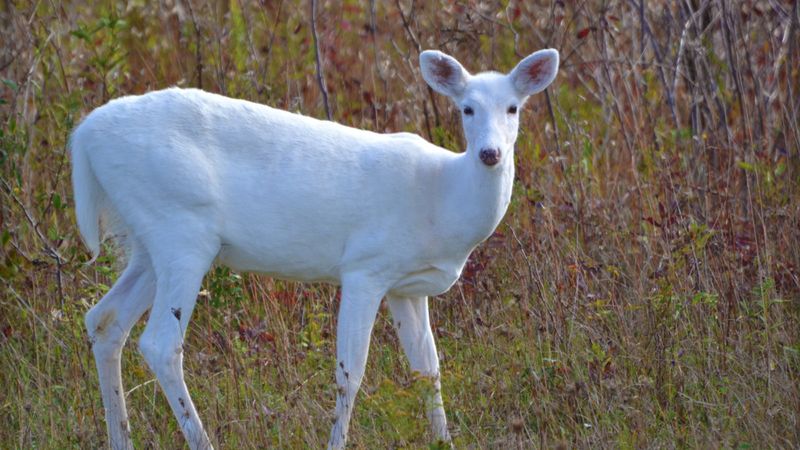
In the dappled forest light, the white deer stands as a symbol of purity and grace. Its presence is both rare and revered in many cultures.
White deer are not albinos but have a genetic condition called leucism, resulting in their white coat. This makes them stand out in their habitats.
They are often associated with spiritual significance and are considered omens of good fortune. Did you know? In Cherokee mythology, spotting a white deer is seen as a sacred encounter.
White Peacock Spider
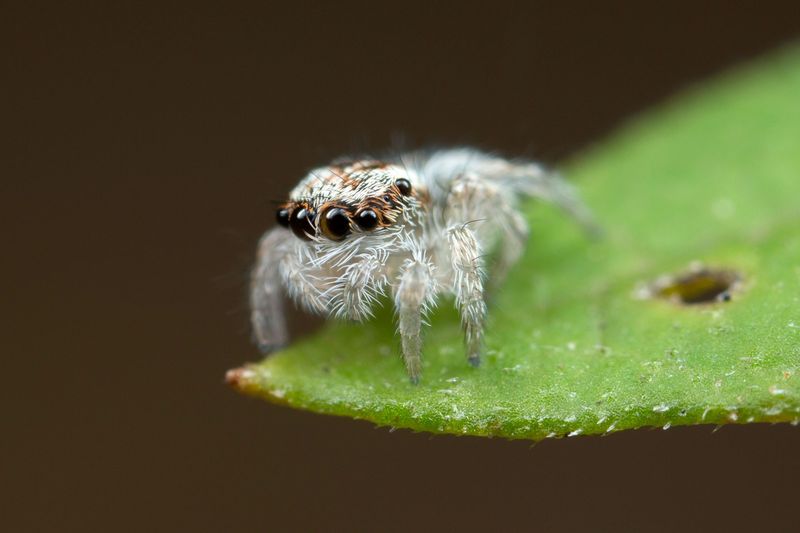
Amidst the foliage, the white peacock spider captivates with its intricate dance. This tiny arachnid, though small, commands attention with its striking appearance.
Known for their courtship displays, male spiders showcase their vibrant colors and unique patterns to attract females. This dance is a spectacle of nature.
Despite their minute size, these spiders have a strong presence. Did you know? The peacock spider’s dance has inspired many cultural art forms. Their charisma is undeniable.
White Raven
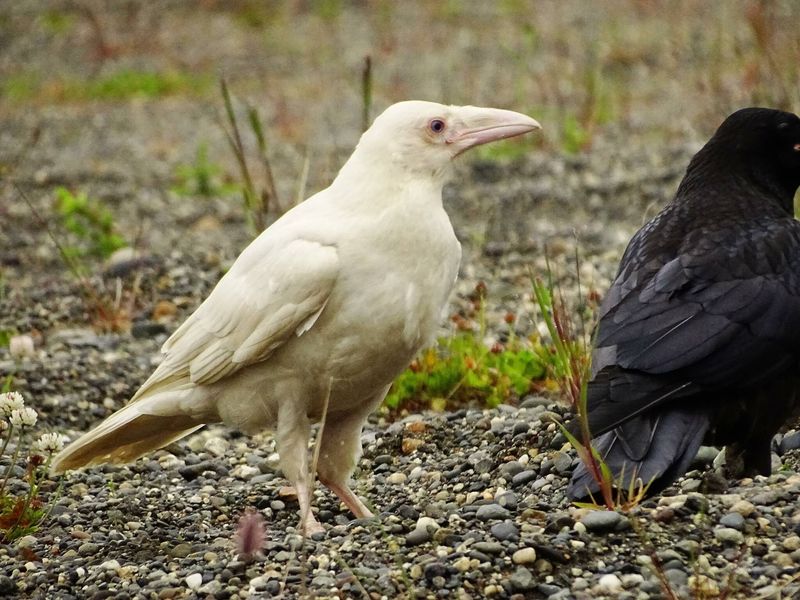
In the realm of myths, the white raven stands apart. Perched on an old tree, its pale plumage contrasts the dark woods, exuding an air of mystery.
White ravens, though rare, hold significance in various cultures, often seen as harbingers of change or symbols of purity.
Their intelligence is remarkable, known for solving complex puzzles. Did you know? In Native American lore, white ravens are considered sacred, believed to bring messages from the spirit world. This mystique adds to their allure.
White Reindeer
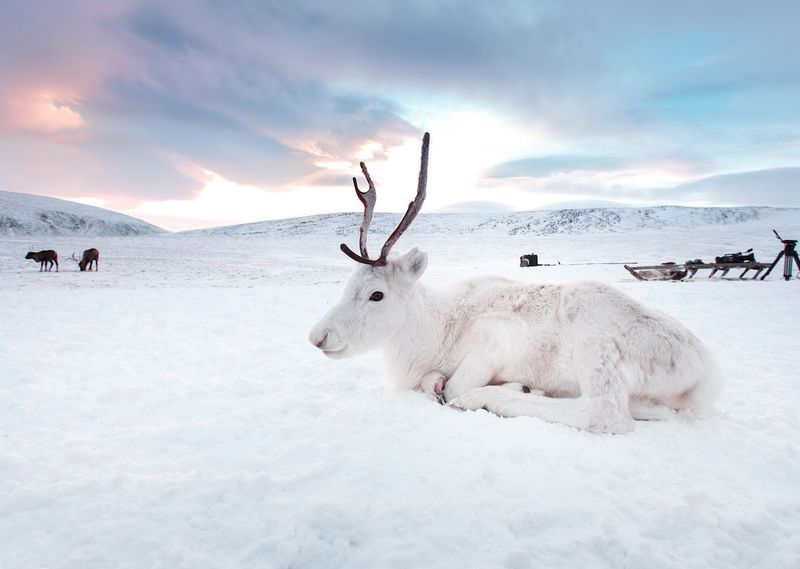
In the snowy expanses of Norway, the white reindeer carries an aura of serenity. Its coat, a blend of white and cream, offers camouflage against the wintry backdrop.
These reindeer are part of folklore, often associated with magical tales. They embody resilience, thriving in challenging environments.
White reindeer are cherished by indigenous communities, symbolizing harmony with nature. Did you know? In Sami culture, white reindeer are considered special gifts from the gods, revered for their unique beauty.
White Squirrel
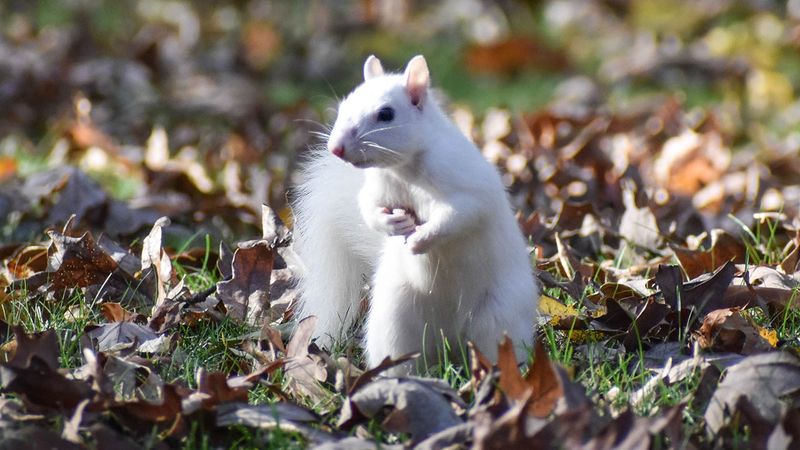
In the golden hues of autumn, the white squirrel leaps with energy, its fur a stark contrast to the fiery leaves. This curious creature is a delight to observe.
White squirrels are rare and often considered lucky sightings. Their white fur is due to a genetic anomaly.
Despite their rarity, they adapt well to urban environments. Did you know? In some towns, white squirrels are celebrated with festivals. Their playful nature brings joy to many.
White Elk
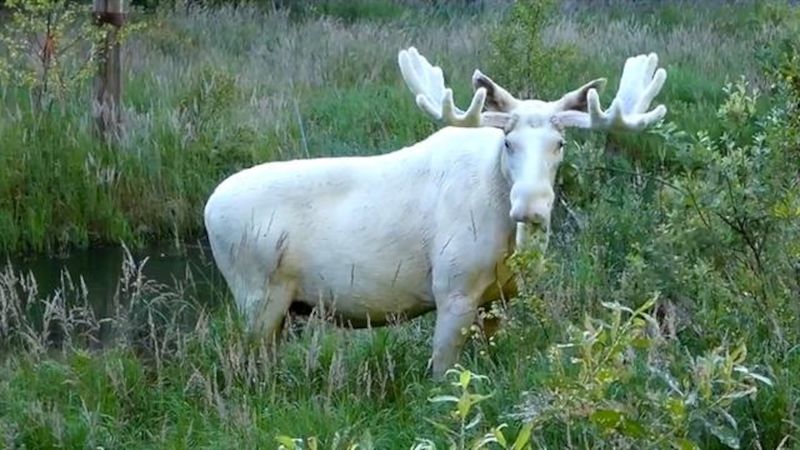
In the mist-laden forests of Scandinavia, the white elk emerges as a creature of legend. Its grand antlers and ghostly white coat make it a magnificent sight.
White elks, rare in the wild, are often seen as mystical beings. They symbolize strength and resilience in many cultures.
Their presence in folklore adds to their enigmatic appeal. Did you know? White elks are sometimes called “ghost elks,” believed to be guardians of the forest. Their mystique is timeless.
White Alligator
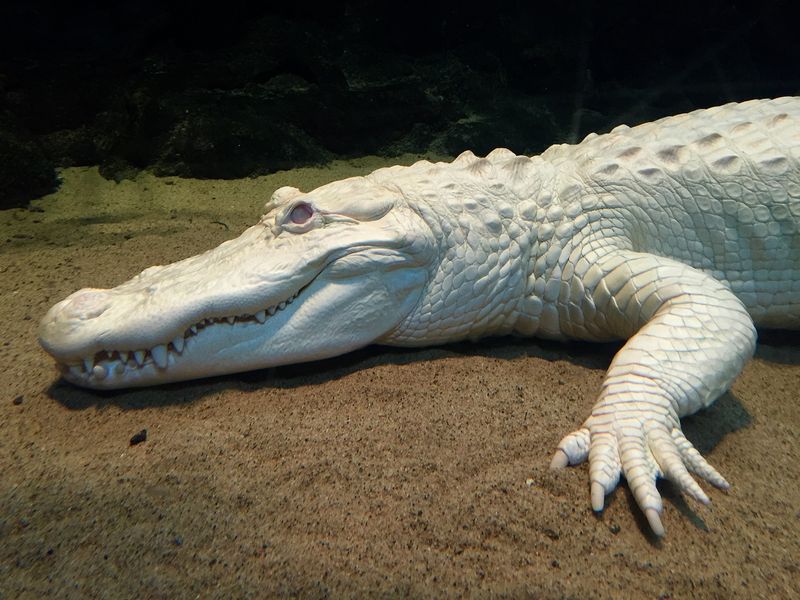
In the bayous of Louisiana, the white alligator emerges as a rare spectacle. Its pale skin, devoid of pigmentation, gives it an ethereal appearance.
These alligators have a genetic condition known as leucism. Although rare, they survive in the wild with the help of camouflage.
White alligators hold cultural significance, often featured in local legends. Did you know? They’re seen as symbols of good luck and prosperity. Encountering one is considered a unique experience.
White Kangaroo
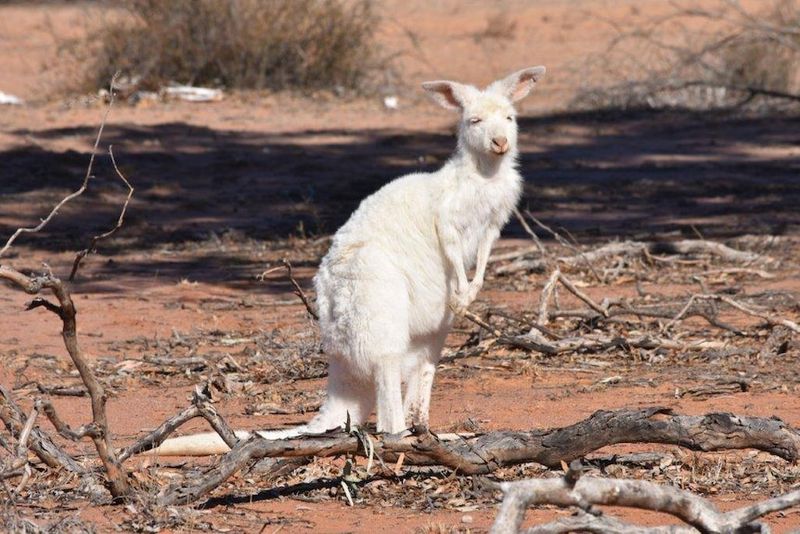
Hopping through the Australian outback, the white kangaroo stands out with its striking appearance. Its white fur is a result of a genetic mutation.
These kangaroos are rare and often seen as anomalies in their native habitats. Their unique color makes them both admired and vulnerable.
Efforts to protect them are crucial as they face threats from predators. Did you know? White kangaroos are often considered symbols of uniqueness and individuality. This distinctiveness sets them apart.
White Giraffe
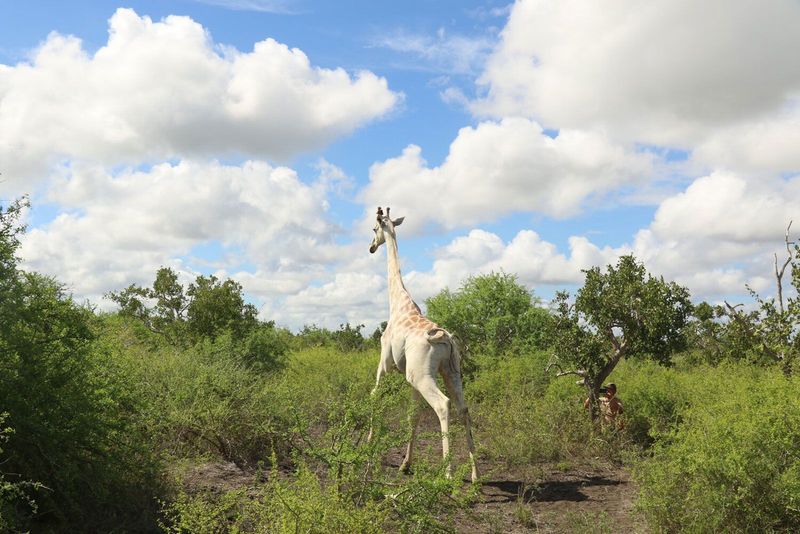
In the African savannah, the white giraffe towers above with grace. Its pale coat, almost ghost-like, is a rare genetic trait known as leucism.
These giraffes are symbols of beauty and rarity, often drawing attention from both locals and tourists.
Conservationists work tirelessly to protect them from poaching. Did you know? The white giraffe’s unique appearance has made it a cultural icon. Its rarity captivates imaginations worldwide.
White Camel

Amidst the endless dunes of the desert, the white camel presents an extraordinary scene. Its coat shimmers under the sun, a stunning anomaly.
White camels are rare, their pale hue a result of genetic variation. They are revered in many cultures for their unique beauty.
These camels are essential to desert communities, providing transportation and resources. Did you know? In some Middle Eastern traditions, white camels are considered symbols of wealth and prosperity.
White Hedgehog
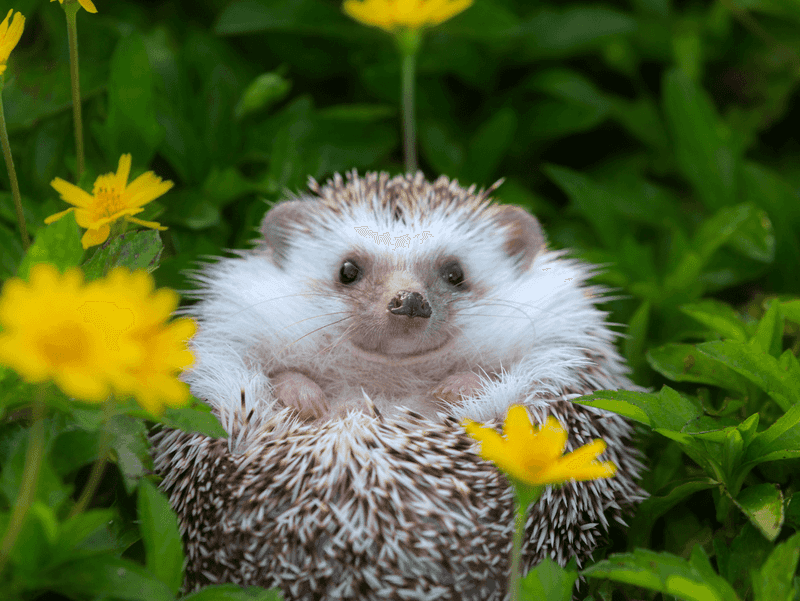
In the garden’s quiet corners, a white hedgehog scuttles, its quills gleaming like frosted needles. This enchanting creature, with eyes as bright as beads, appears as if sculpted from snow. White hedgehogs, though rare, are nothing short of a marvel. Their pristine hue isn’t just an aesthetic wonder; it offers a unique camouflage in winter landscapes.
Interestingly, they are often mistaken for albino hedgehogs, but their eyes dispel this myth. Did you know these hedgehogs are prized in some cultures for good luck? Although they shy away from the spotlight, their rarity and charm make them cherished.
Leucistic Magpie
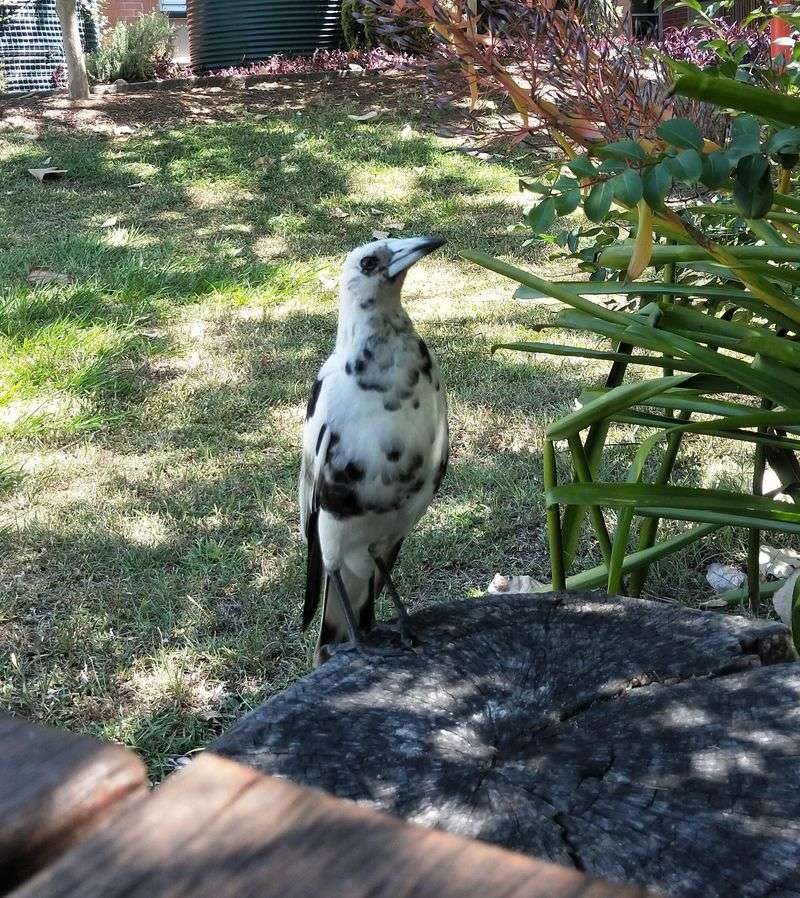
A leucistic magpie alights gracefully on a garden fence, its plumage a breathtaking tapestry of white, with whispers of its iconic black. Unlike the common magpie, this bird lacks melanin, giving it a ghostly elegance. Its soft croon adds a gentle melody to its ethereal presence.
Despite its striking appearance, the leucistic magpie faces challenges in the wild, often due to its conspicuousness. This rare beauty may not blend in easily, but its resilience is noteworthy. Fun fact: These birds are often seen as symbols of transformation, bridging the gap between the known and the mystical.

